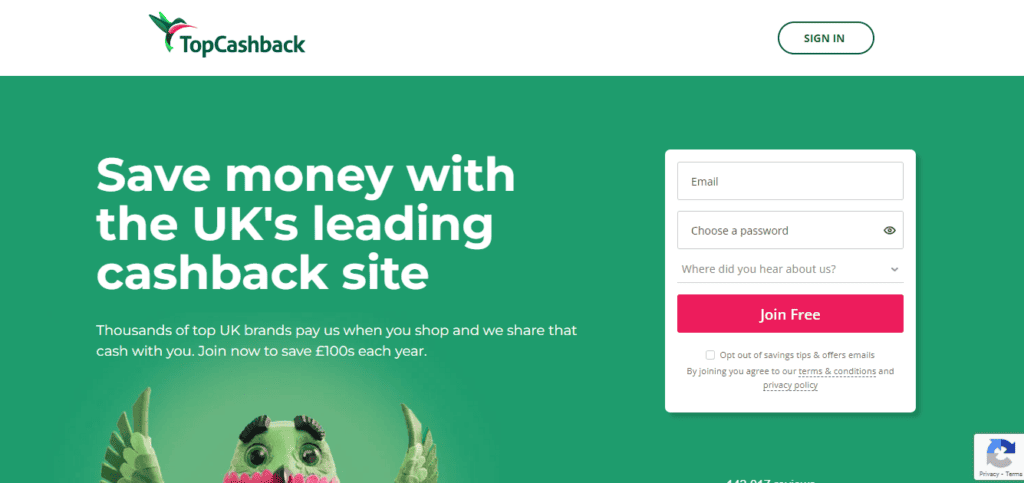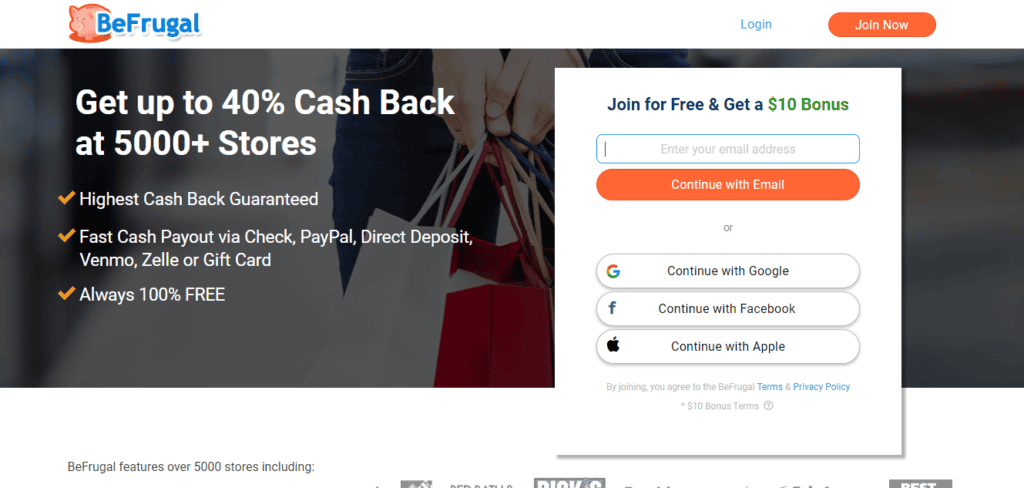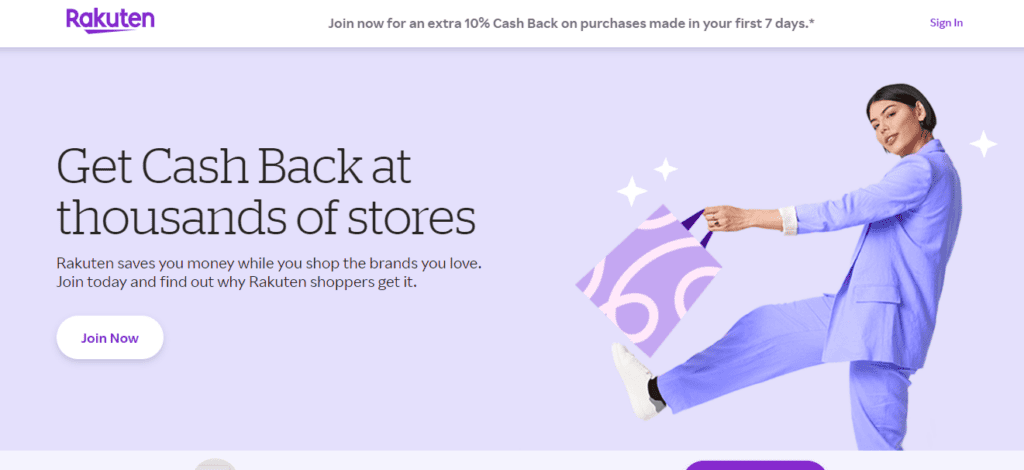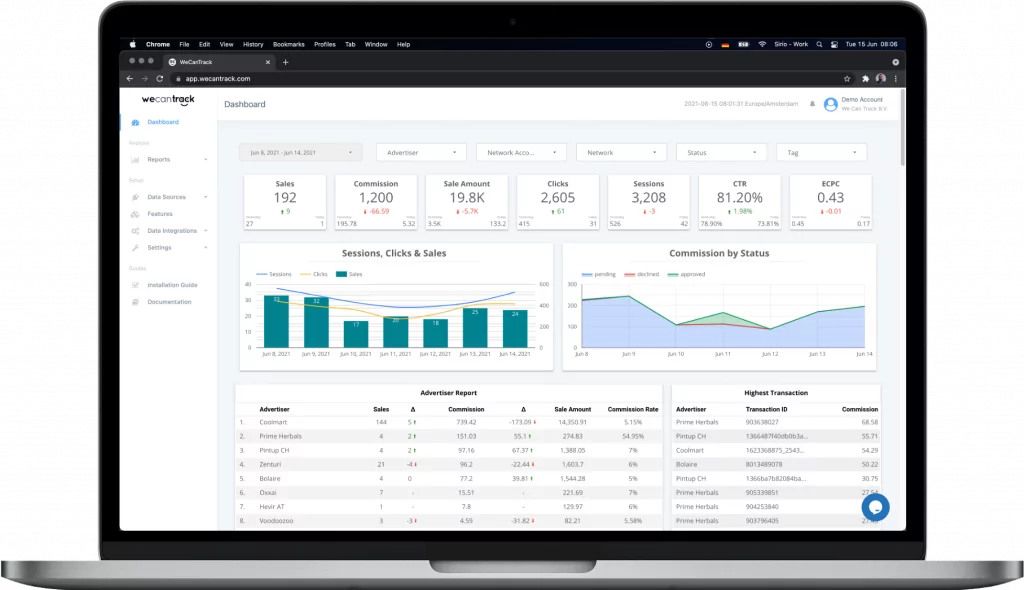The hype of online buying has skyrocketed in recent years, with billions of people around the globe purchasing their necessary stuff over the internet—clothes, electric appliances, groceries, and home goods.
Along with the development of online trading, there was a jump in cashback sites, which implemented the scheme of getting money back on what customers buy. No net cashback sites are a “what is the secret?”
To better understand their business processes, we will walk you through the workings of cashback websites and their main monetization tool: affiliate marketing.
How Cashback Sites Earn Money Overview
How Cashback Sites Earn Money
Cashback sites earn money through affiliate marketing, which is the process of promoting the products or services of another company in exchange for a commission for every successful sale.
When a customer purchases through a cashback site’s affiliate link, the cashback site earns a commission.
Affiliate marketing is a very interesting marketing channel for many companies because it ensures that you only pay a fee once a sale has been made.
Cashback sites offer rewards as a percentage of the commission earned to incentivize customers to shop through their site. This can be a small amount, such as 1% or 2%, or higher for certain merchants or products.
For example, a cashback site might offer 10% cashback on a purchase made from a particular retailer.
Tracking To Make Money
Tracking conversions, or the number of purchases made through a cashback site’s links, is an important part of the process for these sites. Cashback sites use tracking codes and cookies to accurately attribute sales to the correct affiliate.
These methods allow the site to track the number of purchases made through their links and calculate the appropriate commission and cashback amounts.
Setting up an affiliate program for a cashback site is straightforward. Merchants must first apply to become partners and agree to the terms and conditions set forth by the cashback site.
Once accepted, the merchant can set up a custom affiliate link or banner ad to be placed on the cashback site. The cashback site will then track conversions and pay out commissions and cashback to customers as appropriate.
Getting An Audience
It should have become clear now that visitors are the bread and butter of cashback sites. Without a large audience, it’s not interesting for companies to showcase their offerings on the platform.
Also, the more visitors a cashback site attracts, the bigger the chance of them clicking through on an offering, making a sale, and thus earning a commission.
Cashback sites often rely on building a brand and attracting many followers who are looking for new deals and products to try. This is why the user experience on these websites is extremely important: once someone has visited a cashback site, they must want to return.
They need a good strategy and explore all the paid and free traffic sources for affiliate cashback websites.
Another way to increase their audience is to create an affiliate program and let other websites promote it by paying a fixed fee per new sign-up.
Cashback sites can use various strategies to attract and promote the affiliate program. These can include offering competitive commission rates, providing helpful resources and tools for affiliates, and promoting the affiliate program through marketing campaigns and social media.
Optimizing Conversions
After attracting the audience, it’s important to convert them. A conversion is when a website visitor takes an action you want them to, in this case, click through to the website of one of the partnered merchants and make a purchase there.
Optimizing conversions involves developing strategies to improve the performance of your website. This can include A/B testing different banners or designs, optimizing landing pages to increase conversion rates, and targeting the right audience.
The Value Of Marketing Campaigns For Cashback Sites
Marketing campaigns are a key component of the cashback business model. Effective marketing can help drive traffic to a cashback site and encourage more people to use their links for online shopping.
In the long run, this will build a cashback site’s brand recognition and increase its followers and returning customers.
Cashback sites can promote their platforms using many tactics, including social media advertising, email marketing, and content marketing.
Social media advertising is a popular choice for cashback sites, allowing them to target specific demographics and interests. Let’s take Instagram, for example. It’s important to know how to use Instagram for affiliate marketing before running ads.
Email marketing is another effective tactic, allowing cashback sites to reach a targeted audience with personalized messages and offers. Most importantly, it’s a way of reaching your previously built audience again, increasing the chance they will become loyal followers and users of your brand.
Content marketing is also a valuable tool for cashback sites, allowing them to provide valuable information and resources to their audience.
This can include blog posts, video content, and other types of media that educate and inform customers about the benefits of using cashback sites. By creating high-quality content, cashback sites can establish themselves as thought leaders in the industry, build trust with their audience, and thus further grow their audience.
In recent years, new options have emerged that have the potential to impact the effectiveness of marketing campaigns for cashback sites. Social media influencers, for example, can be a powerful tool for promoting cashback sites to a targeted audience.

Cashback websites generate revenue through affiliate commissions, sharing a portion of this with users as cashback. To remain profitable, they focus on cultivating strong relationships with retailers, securing competitive commission rates.
4 Examples Successful Cashback Websites That Are Making A Lot Of Money
To leave you with some prime examples of how cashback sites are making money, these are some examples that have hit the right spot.
TopCashback.co.uk
This cashback website offers rewards on purchases made through their site from a wide range of merchants. They also have a referral program and a sign-up bonus for new members. They also offer a variety of exclusive deals and discounts to their members.
TopCashback was founded in 2005 on a shoestring budget by Oliver (Olly) Ragg and Mike Tomkins, who ran the company from home.
The company only started picking up momentum in 2007 when it reached 10,000 members, and by 2008 Mike and Olly were able to hire their first employees and find office space.
Since then, TopCashback has grown exponentially. By 2011, they had 1 million members in the UK and launched TopCashback in the United States. In 2014, they reached 2 million members. By 2015, they had over 5 million members worldwide and were voted Cashback Site of the Year by Moneyfacts.
By 2020, they had over 15 million members and 240 employees worldwide and won the Moneyfacts Cashback Site of the Year award for the fourth time in the UK.
Their monetization method is simple. It consists of sponsored ads and affiliate marketing. They receive affiliate commissions from merchants when visitors click on their affiliate links and purchase something. They share this commission with buyers as cashback.
Today, TopCashback has sites in the UK, USA, China, Japan, Germany, France, and Australia. According to Similarweb.com, its top markets remain the UK and USA, with around 8.2 million and 3.1 million monthly visits, respectively.
BeFrugal.com
This cashback website offers cashback rewards on purchases made through their site from a wide range of online merchants. They also offer a referral program, a sign-up bonus for new members, and exclusive deals and discounts.
BeFrugal was founded in February 2009 by Jon Lal (CEO) as an online coupon site to help consumers save money.
In 2011 the company introduced cashback rewards – allowing consumers to get cash back on purchases.
Since 2009, BeFrugal has grown significantly and hit $1 billion in sales in 2017, saving consumers an average of $27 per order on over $1 billion of purchases.
Like many cashback sites, their earnings come from sponsored ads and affiliate marketing. However, unlike most cashback sites, BeFrugal pays 100% of the commissions they earn to buyers, and sometimes more.

We have strong relationships with retailers; the promotional spending they do with us means we can share all of our commissions with you, the shoppers.
According to Similarweb, BeFrugal.com gets 1.7 million monthly visits.
Honey
This browser extension-based cashback website applies coupons and cashback rewards when a customer purchases from an online retailer. They also offer a referral program and a sign-up bonus for new members.
Honey (or PayPal Honey) was founded in 2012 by Ryan Hudson and George Ruan. The company operated on a shoestring budget until 2017, when it raised $40.8 million between March 2017 and January 2018.
On November 20, 2019, Paypal announced that it had acquired Honey for $4 billion. PayPal completed the acquisition the following year January 6, 2020.
From its humble beginning, PayPal Honey has grown to having 17+ million members.
Honey’s free rewards program is called PayPal Rewards. The program lets members earn points toward cashback, store gift cards, or a shopping credit on eligible purchases when shopping at participating stores with the Honey browser extension.
Note: Redeeming PayPal Rewards points to shopping credit or cashback is only available for US.
Rakuten.com
Formerly known as Ebates, Rakuten (the Japanese name for optimism) is one of the most popular cashback sites, covering a large number of online merchants. They offer cashback rewards via check or PayPal on purchases made using their website, app, or Chrome browser extension.
They also offer a referral program, a sign-up bonus for new members, and a variety of exclusive deals.
Rakuten was founded in 1997 by Hiroshi (Mickey) Mikitani (CEO). The company is based in Tokyo and employs over 10,000 people worldwide.
Amit Patel (former Vice President, Product Development at Ebates) is the CEO of Rakuten International and Rakuten Rewards.
On September 9, 2014, Rakuten announced it acquired San Francisco-based online rebate site Ebates.com for $1 billion in cash.

It is a natural fit for the Company (Rakuten) to acquire a key player like Ebates, in order to develop a unique and innovative e-Commerce platform, by integrating our existing business assets and technologies of the Rakuten Group with Ebates.
To date, Rakuten has paid over $3.7 billion in Cash Back to 17+ million members in the USA since 1997.
Final Thoughts
In conclusion, cashback sites earn commissions from online merchants through affiliate partnerships.
Cashback sites can optimize their affiliate program and drive more revenue by incentivizing customers with rewards and bonuses and tracking conversions accurately.
Utilizing marketing campaigns, setting up an affiliate program, and optimizing conversions through affiliate marketing are important steps in monetizing a cashback site.








